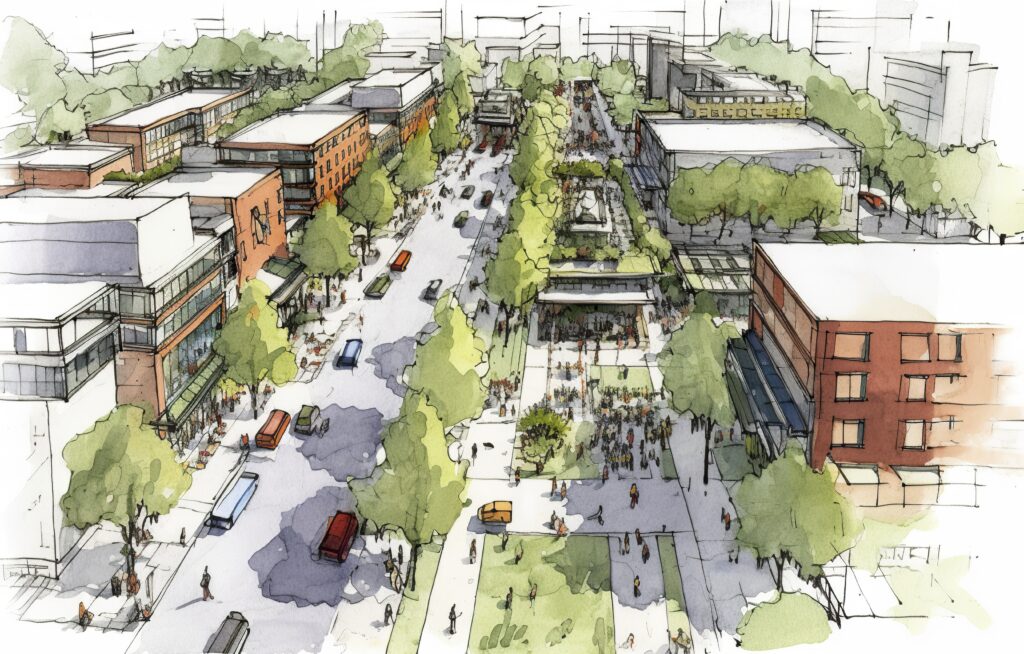The Growing Demand for Single Family Homes: A Solution to Overvalue and Overpopulation in Real Estate
The real estate industry is a dynamic sector that constantly grapples with challenges such as overvalue and overpopulation. In this article, we’ll dissect these interconnected issues, examining their causes and consequences on housing markets globally.
Understanding Overvalue
Overvalue occurs when property prices surge beyond economic justification. Examining the causes helps shed light on this phenomenon.
Causes of Overvalue
- Speculation: Speculative buying artificially inflates demand, driving up property prices.
- Low-interest rates: Central banks keeping rates low encourage more real estate investments.
- Housing market exuberance: Emotional buying and FOMO contribute to a bubble effect.
Consequences of Overvalue
- Housing affordability crisis: Rising prices make it difficult for first-time buyers to enter the market.
- Financial instability: Bursting housing bubbles can have far-reaching economic consequences.
- Reduced mobility: High prices trap homeowners, limiting labor market flexibility.
The Overpopulation Dilemma
Overpopulation in real estate refers to densely populated areas where housing demand surpasses supply, leading to overcrowding.
Causes of Overpopulation
- Urbanization: Migration to cities for economic opportunities results in densely populated urban areas.
- Limited land availability: Geographical constraints make expanding housing options challenging.
- Economic factors: Strong job markets attract more residents, aggravating overpopulation.
Consequences of Overpopulation
- Skyrocketing rents and property prices: High demand leads to increased housing costs.
- Strain on infrastructure: Overpopulation stresses transportation, utilities, and public services.
- Decreased quality of life: Overcrowding contributes to noise pollution, traffic, and reduced access to green spaces.
The Relationship Between Overvalue and Overpopulation
A Vicious Cycle
Overvalue and overpopulation often create a cycle where inflated property values trap homeowners, further limiting housing supply.
Gentrification
Firstly, the intertwining of overvalue and overpopulation can result in gentrification, displacing long-term residents as wealthier individuals move in.
Coping Strategies
Government Interventions
Zoning reforms, affordable housing initiatives, and property tax adjustments can address overvalue and overpopulation.

Urban Planning
Comprehensive planning can create sustainable, livable cities with green spaces and efficient transportation.
Technological Solutions
In addition, smart cities and remote work trends can play pivotal roles in addressing these challenges.
Government Interventions
Governments play a crucial role in managing overvalue and overpopulation through targeted policies.
Zoning Reforms
Relaxing zoning regulations facilitates more housing development, increasing supply and reducing overvalue.
Affordable Housing Initiatives
Building affordable housing units helps alleviate overpopulation and housing affordability issues.
Property Tax Reforms
Finally, adjusting property taxes to discourage speculative investments can curb overvalue.
Urban Planning
Comprehensive urban planning is vital for creating sustainable, livable cities that can accommodate growing populations.
Smart Cities
In addition, emerging technologies, data, and IoT devices can optimize traffic flow, reduce energy consumption, and enhance urban living conditions.
Remote Work
The rise of remote work provides flexibility in living locations, potentially alleviating overpopulation in urban centers.
Long-term Outlook
It is important to note that considering the long-term implications, sustainable development and innovative housing practices become paramount.
Sustainability
Sustainable development and green building practices are critical for addressing overvalue, overpopulation, and mitigating environmental impacts.
Housing Innovation
Lastly, advancements in construction technology, like 3D printing and modular construction, could revolutionize the housing industry, making it more cost-effective and efficient.
Key Takeaways about Overvalue and Overpopulation
In conclusion, the complexities of overvalue and overpopulation impact housing affordability, economic stability, and urban quality of life. Addressing these challenges requires a multifaceted approach encompassing government intervention, urban planning, and technological innovation.
In confronting the challenges of overvalue and overpopulation, a proactive and integrated approach is essential. By implementing sustainable solutions and embracing innovation, we can forge a path towards a more balanced and prosperous real estate landscape.
Balancing the scales between overvalue and overpopulation is not just a real estate concern but a societal imperative. As we navigate these challenges, collaborative efforts from governments, urban planners, and technological pioneers will pave the way for a future where cities are not only thriving but also equitable and inclusive. Finally, by understanding, adapting, and innovating, we can shape a real estate landscape that meets the needs of a dynamic and ever-evolving society.